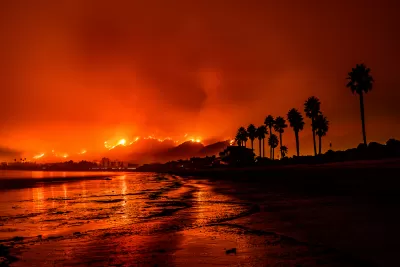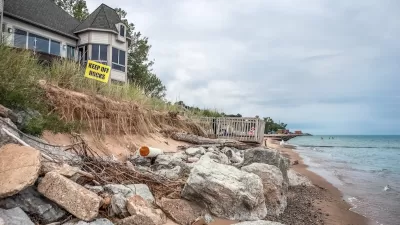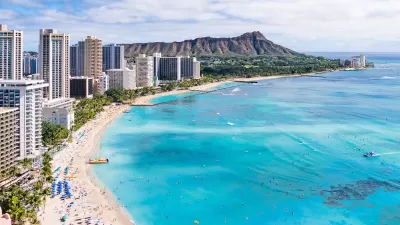The proposed state general obligation bond would address the need to protect communities and natural resources from the impacts of climate change.

California is increasingly experiencing the impacts of climate change, including sea level rise, increased severity and frequency of wildfires, changes in precipitation that increase the risk of both drought and flooding, and increases in temperatures that can adversely impact air quality, public health, and habitats.
State legislators are now considering issuing a general obligation bond to address the need to protect communities and natural resources from the impacts of climate change. If approved by both houses and signed by the Governor, California voters would see the $15.5 billion bond measure on a 2024 statewide ballot in either March or November.
The initiative dedicates funding for projects to:
- Reduce fire risk near communities and ensure forests are healthy enough to withstand more intense wildfires;
- Reduce the risk of catastrophic flood events by slowing and capturing runoff, which will improve groundwater infiltration and help to stabilize drinking water supplies;
- Protect coastal communities from sea-level rise; and
- Help urban communities adapt to rising temperatures by reducing heat-island effects through greening projects such as parks and supportive measures such as cooling centers.
General obligation bonds are debt that is secured by the General Fund; the debt service on bonds issued by the state must be paid on an annual basis. Fully paying off a bond issue can take decades (sometimes 30 or more years). Bonds issued by the State of California are able to obtain favorable financing because interest on these bonds is tax exempt. Per the California Constitution, voters must approve general obligation bonds in excess of $300,000. There are two pathways to the ballot for general obligation bonds that exceed this $300,000 threshold: 1) through an act of the Legislature; and, 2) via the citizens’ initiative process.
FULL STORY: $15.5 Billion 'Climate Resiliency Bond' Getting Ready for Voters on 2024 Ballot

Manufactured Crisis: Losing the Nation’s Largest Source of Unsubsidized Affordable Housing
Manufactured housing communities have long been an affordable housing option for millions of people living in the U.S., but that affordability is disappearing rapidly. How did we get here?

Americans May Be Stuck — But Why?
Americans are moving a lot less than they once did, and that is a problem. While Yoni Applebaum, in his highly-publicized article Stuck, gets the reasons badly wrong, it's still important to ask: why are we moving so much less than before?

Using Old Oil and Gas Wells for Green Energy Storage
Penn State researchers have found that repurposing abandoned oil and gas wells for geothermal-assisted compressed-air energy storage can boost efficiency, reduce environmental risks, and support clean energy and job transitions.

Minneapolis Bans Rent-Setting Software
Four cities have enacted restrictions on algorithmic software that can inflate rent costs.

Oakland to Add 244 New EV Chargers
Oakland plans to launch its new charging network at eight locations by the end of 2025.

Jane Goodall Inspires with Message of Hope, Resilience, and Environmental Action
Speaking in Pasadena, Jane Goodall offered a hopeful and inspirational message, urging global compassion, environmental responsibility, and the power of individual action to shape a better future.
Urban Design for Planners 1: Software Tools
This six-course series explores essential urban design concepts using open source software and equips planners with the tools they need to participate fully in the urban design process.
Planning for Universal Design
Learn the tools for implementing Universal Design in planning regulations.
Heyer Gruel & Associates PA
City of Moreno Valley
Institute for Housing and Urban Development Studies (IHS)
City of Grandview
Harvard GSD Executive Education
Salt Lake City
NYU Wagner Graduate School of Public Service
City of Cambridge, Maryland





























